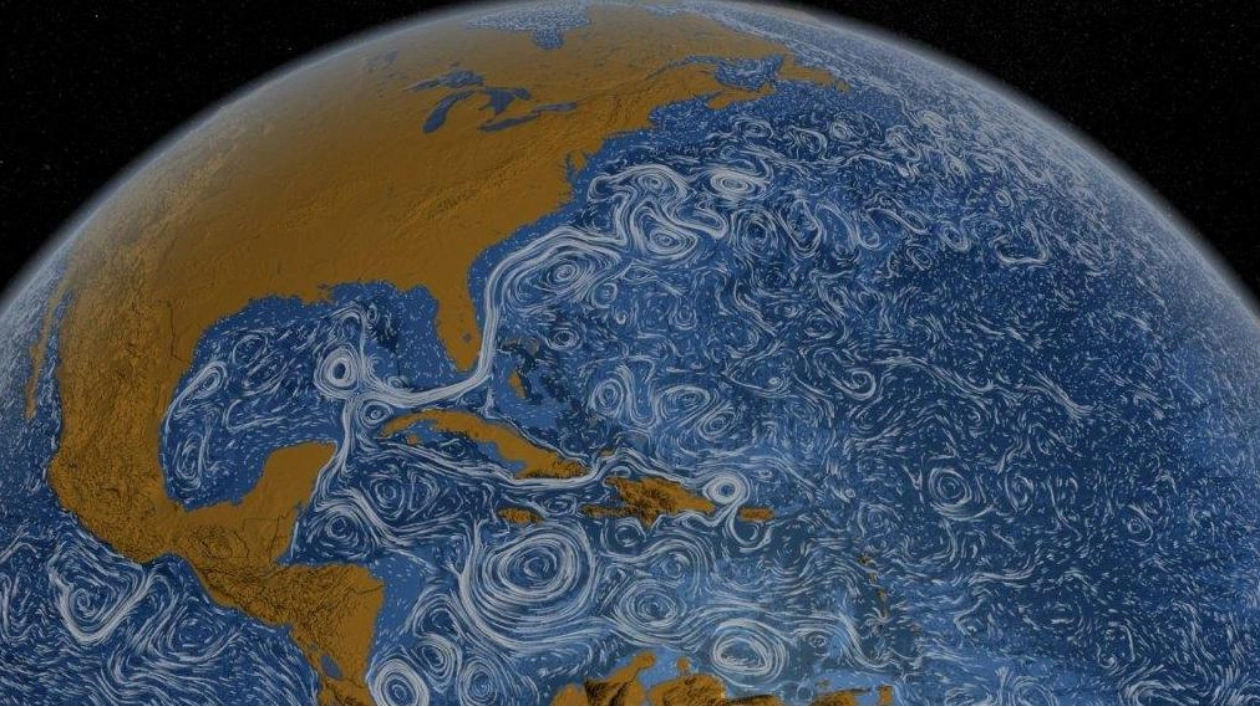The ocean’s circulatory system may not be faring as poorly as previously believed. A crucial ocean artery known as the Florida Current, which serves as a barometer for the ocean’s climate regulation capabilities, has been seemingly weakening for decades. However, recent research suggests that this decline might not be as drastic as initially thought. The current has actually remained stable over recent decades, according to a study published on September 5 in Nature Communications.
A previously reported decline in the flow had led to speculations that a major ocean current system—crucial for regulating Earth’s climate—might have weakened due to human-induced climate change. Some researchers had even suggested that the larger system, known as the Atlantic Meridional Overturning Circulation (AMOC), could collapse this century, leading to significant cooling in the northern hemisphere and sea level rises along some Atlantic coastlines by up to 70 centimeters.
Oceanographer Hali Kilbourne of the University of Maryland Center for Environmental Science in Solomons, who was not involved in the new study, says, “The good news is that the AMOC is slowing down less than we thought, and that means there’s still time to avert a more serious slowdown.” However, because the reassessed data span only a few decades, she notes, “there’s still an outstanding question about whether or not the AMOC has slowed since preindustrial times,” around the mid-1800s.
The AMOC functions like a two-level conveyor belt, circulating heat, salt, and nutrients through the Atlantic Ocean. The upper level carries warm, near-surface waters from the tropics to the North Atlantic, where the water cools and sinks to the bottom, then returns south along the lower level, eventually warming, rising, and repeating the cycle. In the subtropical North Atlantic, most of the water carried by the AMOC’s upper level originates from the Florida Current, which transports water from the Gulf of Mexico into the Gulf Stream.
Since 1982, a seafloor telecommunications cable spanning the Florida Strait has been used to monitor this powerful current, providing the longest observational record of any AMOC component. Seawater contains charged atoms called ions, which flow across the cable and generate a measurable voltage. By calibrating voltage measurements with direct observations from periodic research cruise surveys, scientists can calculate the water flow across the cable on any given day.
However, this process isn’t flawless, says oceanographer Denis Volkov of the University of Miami. Over the decades, data processing has changed, and after 2000, there was a failure to account for the shifting intensity and orientation of Earth’s magnetic field. After correcting for these geomagnetic shifts, the data indicate that in each decade since 2000, the Florida Current’s flow rate declined by about 100,000 cubic meters per second—roughly a quarter of the previously reported decline, and insignificant considering the current’s average flow of about 32 million cubic meters per second.
The correction also reduced estimates of a recent decline of the AMOC by about 40 percent. Each decade since 2000, the flow rate of the AMOC decreased by about 800,000 cubic meters per second, while it moves on average some 17 million cubic meters each second. While this is still a decline, it’s barely significant, Volkov says, adding that it’s not yet possible to determine whether the decline is due to climate change or a natural fluctuation.
The takeaway is that the Florida Current’s recent behavior does not indicate that the AMOC is slowing down due to climate change. Or the observational record is too short to detect such a decline. “This is a great example of how with any scientific enterprise, we’re always having to revise our data, our assumptions, and our current dogma as new information comes to light,” Kilbourne says.
However, much of the work indicating an AMOC decline since preindustrial times uses paleoclimate proxy data, including deep-sea sediment grain sizes and coral compositions, which extend over thousands of years. The revised dataset is still too short to alter our understanding of the AMOC’s long-term evolution, Kilbourne says. It’s crucial to continue making these observations, as they may eventually help show how climate change is affecting the AMOC, says oceanographer Sophia Hines of the Woods Hole Oceanographic Institute in Falmouth, Mass.






